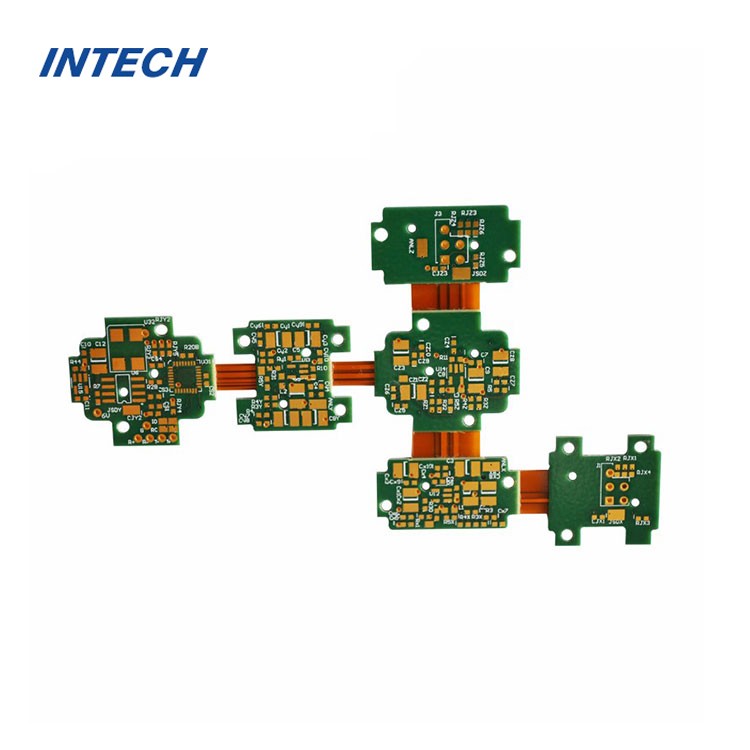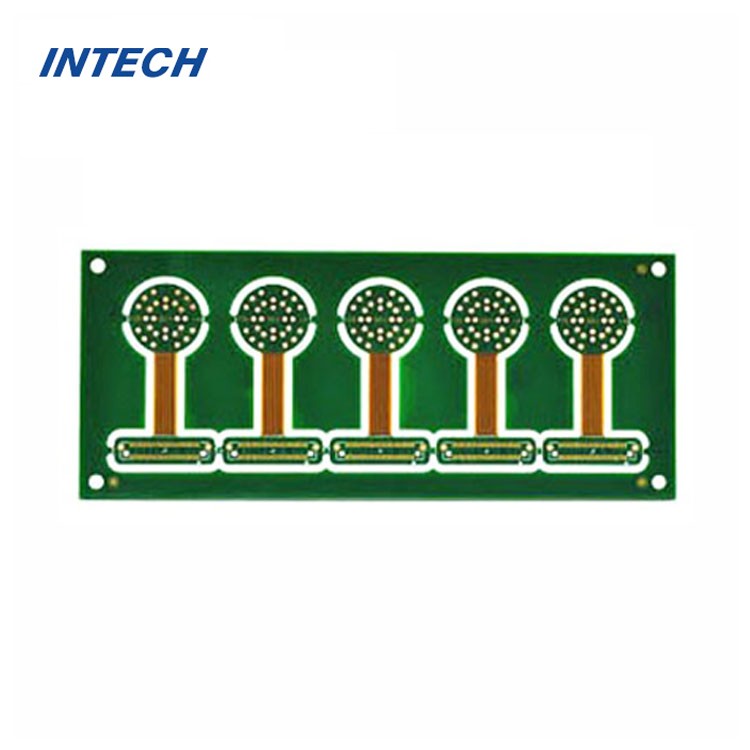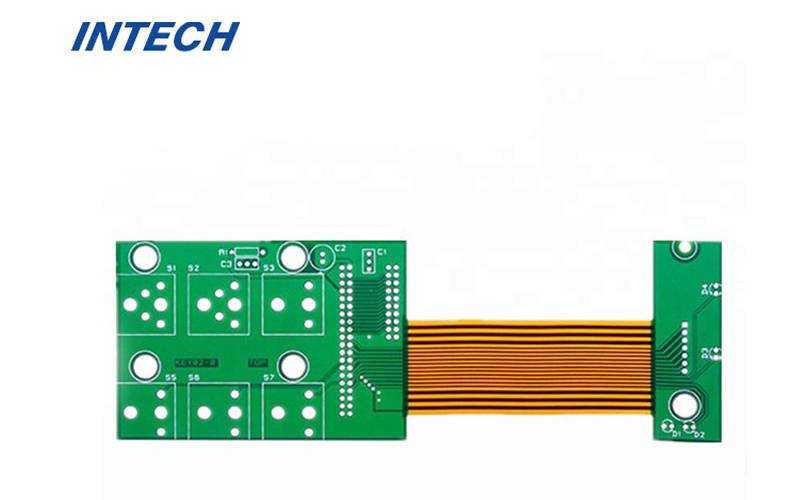How Can Custom Flex-Rigid PCB Save Space in Your Design?
Date:2025-02-20 11:58:38
Devices are becoming increasingly compact, yet they must maintain high functionality and performance. To meet these requirements, custom flex-rigid PCB designs are gaining popularity. Flex-rigid PCBs combine the benefits of both flexible and rigid circuit boards, offering a unique solution to space constraints while maintaining reliability and durability. This article will explore how custom flex-rigid PCBs can save space in your design, helping you create more efficient and compact electronic devices.
What is Custom Flex-Rigid PCB?
A flex-rigid printed circuit board is a hybrid circuit board that integrates both flexible and rigid sections into a single design. The rigid sections provide structural support, while the flexible portions allow the board to bend, twist, or fold without compromising the integrity of the circuit. This combination of flexibility and rigidity makes flex-rigid PCBs ideal for compact, complex designs where space optimization is critical.Custom flex-rigid PCB designs are tailored to meet specific requirements, ensuring that the board fits seamlessly into your device while maximizing available space. This flexibility makes them perfect for applications where space is limited, such as wearable devices, smartphones, medical devices, and automotive electronics.

How Custom Flex-Rigid PCBs Save Space
Here are several ways custom flex-rigid PCBs can save space in your designs:
1. Efficient Component Layout
Traditional rigid PCBs require separate interconnects and additional components to handle complex circuitry, which can take up significant space. In contrast, custom flex-rigid PCB design allows for the integration of both rigid and flexible components into one compact layout. The rigid sections can hold high-density components, while the flexible sections enable intricate routing paths that would otherwise require multiple layers or additional connectors.This integration reduces the overall size of the board and the need for extra components, helping save precious space within the device.
2. Elimination of Wiring and Connectors
In many designs, traditional PCBs require numerous wiring and connectors to link different sections of the board. These additional components not only consume space but can also increase the risk of mechanical failure over time.With custom flex-rigid PCB manufacturing, the flexible part of the board allows it to be bent, eliminating the need for additional wiring and connectors. This reduces the overall component count and frees up space in the device, which is especially beneficial for miniaturized devices like wearables and smartphones.
3. Multi-layer Design for Compactness
Flex-rigid PCB design allows the use of multi-layer configurations, combining the rigid and flexible layers to create compact and high-density circuits. The flexibility of the design means that components can be placed on multiple layers, with flexible sections serving as bridges between the rigid areas. This compact layout increases the component density while reducing the overall footprint of the PCB.
A multi-layer flex-rigid PCB can provide a higher circuit density compared to a traditional rigid PCB, leading to more compact designs. This is especially useful for applications that require multiple functional units in a small package, such as medical sensors or mobile devices.
4. Bending and Conforming to Device Shapes
One of the most significant advantages of flex-rigid PCBs is their ability to bend and conform to the shape of the device. Flexible sections can be routed through tight spaces and contoured to fit the device's design, reducing the need for larger, more complex boards. This flexibility makes custom flex-rigid PCBs ideal for unconventional or irregular-shaped devices.
For instance, in wearable devices, the PCB can be bent to follow the curvature of the device, maximizing internal space and ensuring that no valuable area goes unused. This ability to adapt to the shape of the device allows for significant space savings, particularly in consumer electronics and medical devices.
5. Reduced Weight and Thickness
By eliminating the need for extra connectors, interconnects, and wiring, custom flex-rigid PCBs not only save space but also reduce the weight and thickness of the device. These factors are critical in industries like aerospace, automotive, and consumer electronics, where lightweight and thin designs are often necessary.
Custom flex-rigid PCB manufacturing techniques ensure that these boards maintain a thin profile without sacrificing performance, which is crucial when optimizing for size and weight. This makes them ideal for compact consumer electronics like smartphones, laptops, and other portable devices.

Comparing Custom Flex-Rigid PCBs with Other Designs
To better understand how custom flex-rigid PCBs save space, let’s compare them to traditional rigid PCBs and flexible PCBs in the following table:
| Feature | Custom Flex-Rigid PCB | Rigid PCB | Flexible PCB |
|---|---|---|---|
| Space Efficiency | High – combines flexibility and rigidity in a compact design | Moderate – requires more space for connectors and interconnects | High – flexible, but may require multiple layers for complex designs |
| Durability | High – resistant to mechanical stress, vibration, and bending | High – sturdy but lacks flexibility | Moderate – susceptible to wear in harsh environments |
| Component Density | High – multi-layer design with flexible routing options | Moderate – less flexibility for dense routing | High – requires careful design for dense components |
| Application | Wearables, smartphones, medical devices, automotive electronics | Consumer electronics, industrial machines | Flexible devices, custom shapes, some wearable tech |
| Cost | Higher – due to complexity of design and manufacturing | Lower – easier and cheaper to produce | Moderate – dependent on material and design complexity |
| Weight | Low – reduces need for additional components | Moderate – may require more materials | Low – lightweight and flexible |
Advantages of Custom Flex-Rigid PCBs for Space-Constrained Applications
Wearable Technology: Devices like smartwatches and fitness trackers require compact, high-performance PCBs. Custom flex-rigid PCBs can bend and fit into the curved shapes of wearable devices while maintaining a high level of functionality and component density.
Medical Devices: Custom flex-rigid PCBs are used in devices like hearing aids, pacemakers, and diagnostic equipment, where space optimization and reliability are paramount. Their ability to integrate flexible and rigid sections allows for more compact, efficient designs.
Consumer Electronics: As consumer electronics continue to shrink, flex-rigid PCB design offers a solution for maintaining high performance in smaller, more lightweight devices like smartphones, tablets, and laptops.
Custom flex-rigid PCB design offers significant space-saving advantages by combining the best features of rigid and flexible circuit boards. By reducing the need for connectors, wiring, and extra components, these PCBs enable more compact, efficient, and reliable designs. Flex-rigid PCB manufacturing ensures that your devices remain small without compromising on performance, making them ideal for space-constrained applications in industries like consumer electronics, medical devices, and wearables.As the demand for smaller and more powerful electronics continues to grow, custom flex-rigid PCBs will play a pivotal role in helping designers create the next generation of compact, high-performance devices.

